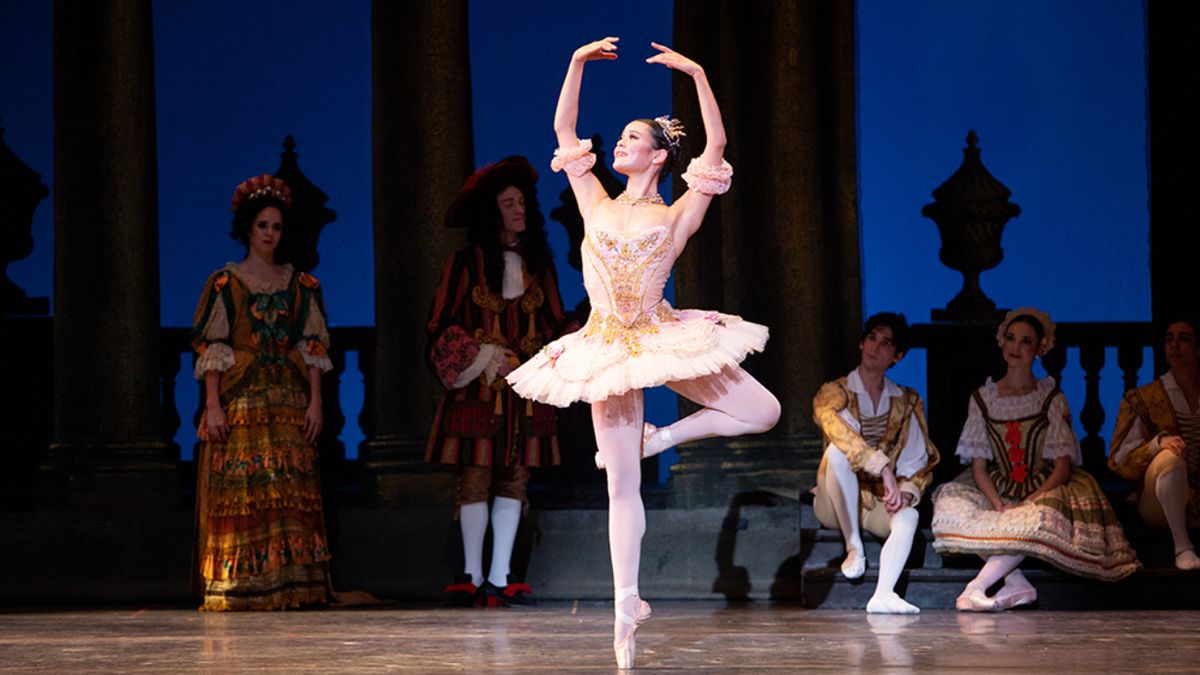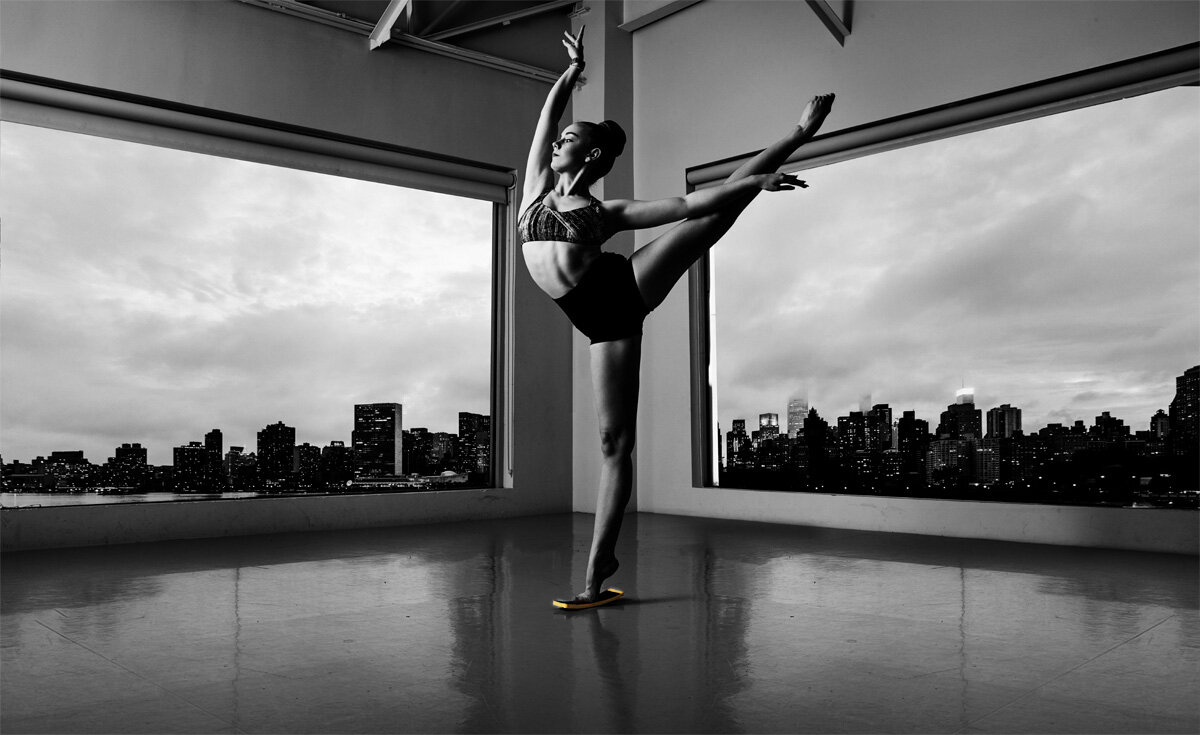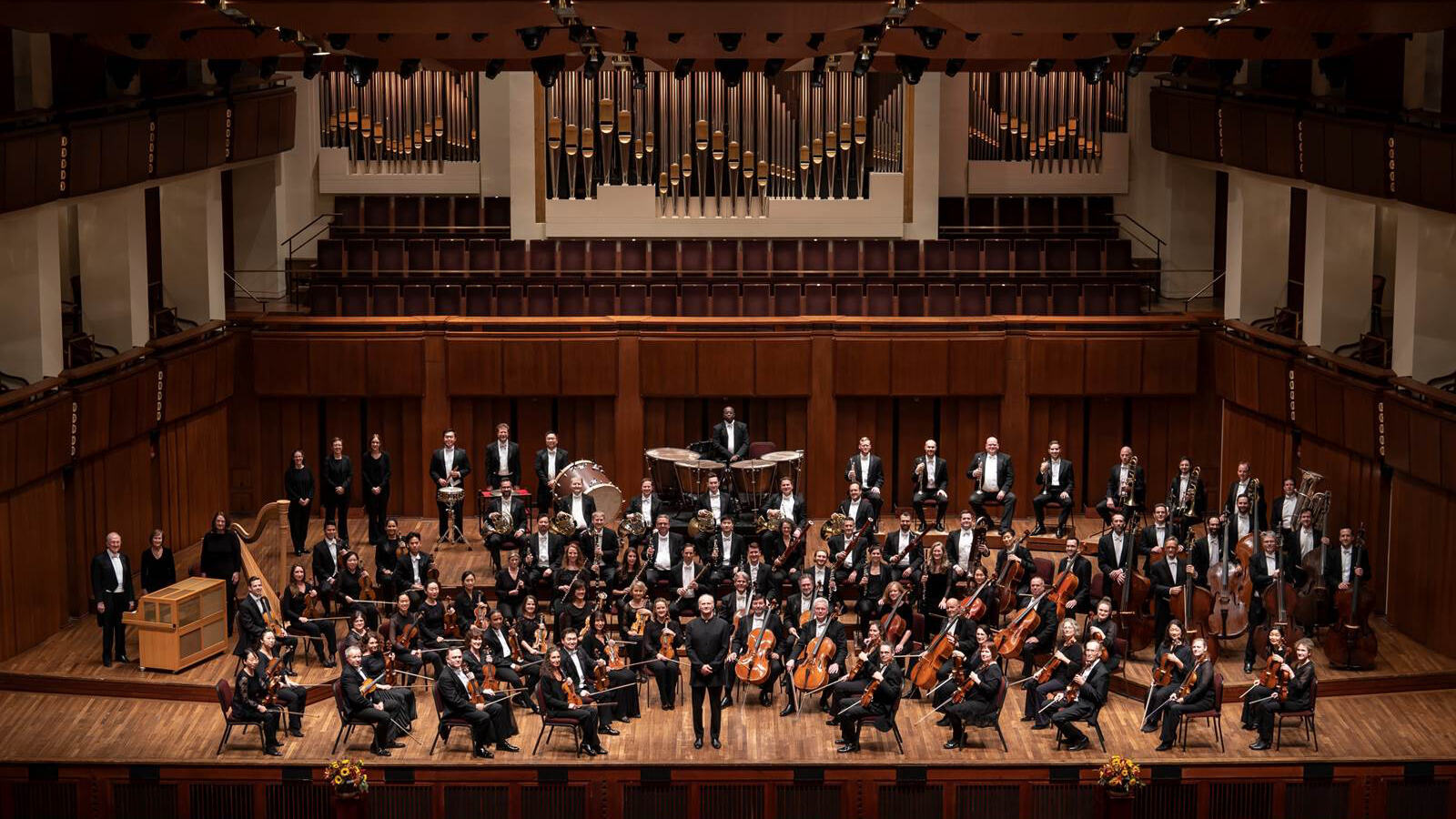Home>Events & Info>Ballet>What Are Turns Called In Ballet


Ballet
What Are Turns Called In Ballet
Modified: January 22, 2024
Discover the art of ballet and explore the terminology used in this elegant dance form. Learn what turns are called in ballet and enhance your dance knowledge.
(Many of the links in this article redirect to a specific reviewed product. Your purchase of these products through affiliate links helps to generate commission for AudioLover.com, at no extra cost. Learn more)
Table of Contents
Introduction
When we think of ballet, we often picture graceful movements and breathtaking leaps. However, one of the most impressive and challenging aspects of ballet technique is the art of turns. From simple pirouettes to intricate fouettés, turns play a crucial role in bringing elegance and precision to a dancer’s performance.
In ballet, turns refer to the graceful rotation of the body on the standing leg, often accompanied by an extension of the working leg. These turns require immense balance, coordination, and control, making them a true test of a dancer’s skill and technique.
Turns in ballet can be classified into different levels based on their complexity and execution. Beginners start with basic turns, gradually progressing to more intermediate and advanced variations. Each turn requires a distinct set of steps, footwork, and coordination, leading to breathtaking displays of artistry on stage.
In this article, we will explore the various types of turns in ballet, from the foundational movements to the more intricate variations. We will also discuss common mistakes dancers make in turns and provide tips for improving this essential aspect of ballet technique.
Whether you are a ballet enthusiast or a budding dancer, understanding the terminology, technique, and artistry behind ballet turns will deepen your appreciation for this beautiful art form. So, let’s dive into the mesmerizing world of ballet turns and discover the secrets behind these captivating movements.
Definition of Turns in Ballet
In ballet, turns are defined as the rotational movements of the body on the standing leg. These movements involve a dancer spinning around their own axis, often accompanied by an extension of the working leg.
Turns in ballet are not simply spinning around aimlessly. They require a combination of strength, balance, technique, and artistry to execute seamlessly. The dancer must maintain proper alignment, engage the core muscles, and use precise footwork to achieve a controlled and graceful rotation.
The use of turns in ballet serves multiple purposes. They add artistic flair and excitement to a performance, showcase a dancer’s technical ability and control, and allow for seamless transitions between different movements and positions on stage.
Turns can be executed in various directions and positions, including en dehors (outward), en dedans (inward), and in various body positions such as arabesque, attitude, or even in a crouched position known as a jazz or barrel turn.
Throughout a ballet piece, turns are incorporated into choreography to enhance the storytelling and express the emotions and character of the dancer. They can be performed as solos, duets, or group formations, creating visually stunning sequences that captivate the audience.
As dancers progress in their training, they learn to execute more complex and challenging turns, incorporating multiple rotations, changes of direction, and intricate arm and leg movements.
The art of turns in ballet is a cornerstone of the technique and artistry of classical ballet. Mastering this skill requires dedication, practice, and a deep understanding of body mechanics and alignment.
Now that we have established the definition and importance of turns in ballet, let us explore the different levels and variations of turns that dancers aspire to master.
Basic Turns
Basic turns form the foundation of a dancer’s journey into the world of ballet. These turns are typically introduced in the early stages of training and serve as building blocks for more advanced techniques.
One of the most fundamental turns in ballet is the pirouette. Pirouettes are characterized by a full rotation of the body on the standing leg, with the working leg positioned either in passé or retiré. Dancers must maintain a strong core, spot their focus, and use their arms to maintain balance and control during the turn.
Another common basic turn is the chainé turn. Chainé turns are a series of rapid, continuous turns performed in a straight line or a curved path. Dancers execute these turns by swiftly transferring their weight from one foot to the other while creating a spinning effect.
The piqué turn is another essential basic turn in ballet. Piqué turns involve stepping directly onto the demi-pointe or pointe of the working leg, followed by a controlled rotation on the supporting leg. These turns showcase the dancer’s strength and precision.
As dancers progress, they may learn additional basic turns such as the soutenu turn, which involves a half-turn while maintaining the feet in a crossed position, or the chainé en tournant, a variation of the chainé turn performed with a full rotation.
Incorporating basic turns into choreography allows dancers to develop their technique and showcase their control, balance, and artistry. These turns are the building blocks for more complex movements that are yet to come.
Practicing basic turns can be challenging, but with dedication and proper technique, dancers can master these foundational skills and move on to more intermediate and advanced turns.
Now that we have explored the basic turns in ballet, let us delve into the next level of turns that dancers strive to perfect – the intermediate turns.
Intermediate Turns
As dancers progress in their training and technique, they begin to tackle more challenging and intricate turns. Intermediate turns require a higher level of control, strength, and precision, showcasing the dancer’s continued growth and development.
One of the notable intermediate turns in ballet is the fouetté turn. Fouettés are characterized by a series of consecutive turns performed on one leg while the working leg extends and whips around the body. These turns require exceptional balance, core strength, and coordination between the upper and lower body.
Another intermediate turn is the en dedans turn. En dedans turns are executed with a rotation inward, towards the supporting leg. Dancers often perform en dedans turns in various positions, such as passé or attitude, incorporating intricate arm movements and precise footwork.
The tombé en tournant is another intermediate turn that combines a traveling step with a rotation. Dancers perform a tombé, which is a controlled fall onto one leg, followed by a turn. This turn requires fluidity, control, and swift footwork to execute seamlessly.
Intermediates may also start to master multiple rotations in turns, such as double or triple pirouettes. These turns require exceptional balance, strength, and proper spotting technique to execute each rotation with control and precision.
Throughout this level, dancers focus on refining their technique, developing greater control over their turns, and incorporating artistry and expression into their performances. Intermediate turns serve as a stepping stone to more advanced variations and allow dancers to showcase their skill set and versatility.
It is important for dancers at this level to continue to practice and perfect their technique, as proficiency in intermediate turns prepares them for the challenges that lie ahead in their ballet journey.
Now, let’s proceed to the pinnacle of ballet turns – the advanced turns.
Advanced Turns
Advanced turns in ballet represent the culmination of years of training, discipline, and dedication. These turns require an exceptional level of technique, strength, and artistry, pushing dancers to their physical and artistic limits.
One of the most iconic advanced turns in ballet is the fouetté en tournant. This turn involves a series of consecutive rotations on one leg while the working leg performs rapid whip-like movements, known as fouetté en dehors. These turns require exceptional control, balance, and speed, as well as precise coordination between the upper and lower body.
The grand fouetté is another challenging turn performed en dedans, with a full leg extension and high développé. Dancers execute multiple rotations while maintaining a beautiful line and fluidity in their movements. This turn demands incredible strength, flexibility, and control.
Another notable advanced turn is the Italian fouetté, also known as the Italian fouetté turn. This turn combines a pirouette with intricate leg movements, such as multiple fouetté en dedans and en dehors, showcasing the dancer’s agility, speed, and technical prowess.
Advanced turns also include variations of the classic pirouette, such as the tour en l’air or the double tour en l’air. These turns involve jumping into the air and executing a full or double rotation before landing back on the supporting leg. They require explosive power, impeccable control, and precise timing to execute flawlessly.
Advanced turns challenge dancers both physically and mentally, as they require a deep understanding of technique, body alignment, and the ability to convey emotion and artistry while executing complex sequences of movement. These turns often serve as show-stopping moments in ballet performances, leaving audiences in awe of the dancers’ skill and grace.
With consistent practice, dedication, and a relentless pursuit of perfection, dancers can aim to master these challenging advanced turns, reaching new heights of artistry and technical excellence.
Now that we have explored the pinnacle of ballet turns, let’s move on to the variations of turns that add depth and diversity to a dancer’s repertoire.
Variations of Turns
Ballet offers a wide range of variations when it comes to turns, allowing dancers to showcase their individuality, creativity, and versatility. These variations add depth and diversity to a dancer’s repertoire, pushing the boundaries of what is possible in terms of technique and artistry.
One popular variation is the attitude turn. In this turn, the working leg is lifted and bent at the knee to form an attitude position while the dancer rotates on the supporting leg. The attitude position adds a beautiful line and elegance to the turn, creating a visually stunning effect.
The chaine en tournant is another variation commonly seen in ballet. It involves a series of rapid turns while the dancer travels in a straight line or a circular path. The chaine en tournant showcases the dancer’s ability to maintain balance and control while executing quick, precise turns with fluid arm movements.
The tour jeté, also known as the grand jeté en tournant, combines the elements of a grand jeté with a turn. Dancers perform a soaring leap through the air, executing a turn in mid-air, before landing gracefully on the opposing foot. This variation requires exceptional strength, power, and control.
Another notable variation is the renversé turn. In this turn, the dancer starts by leaning to the side with a développé of the leg, creating a beautiful arc. They then rotate on the supporting leg while maintaining the développé position, creating a unique and visually captivating turn.
Ballet also offers variations of turns that incorporate specific arm movements and positions, adding complexity and beauty to the overall performance. Examples include the soutenu turn with open arms, where the dancer extends their arms to the sides, or the port de bras en tournant, where the dancer fluidly transitions through various arm positions while executing a turn.
These variations of turns challenge dancers to not only showcase their technical abilities but also to express their artistry and convey emotion through their movements. They provide opportunities for dancers to bring their own unique style and interpretation to their performances.
While mastering the traditional turns is vital in ballet, exploring and incorporating variations into one’s repertoire adds creativity and artistic flair, making each dancer’s performance truly unique and captivating.
Now, let’s move on to the next section where we will discuss common mistakes that dancers often encounter in turns and how to overcome them.
Common Mistakes in Turns
Executing turns in ballet requires a combination of strength, balance, and technique. However, even the most skilled dancers can fall prey to common mistakes that can hinder their performance. Identifying and correcting these mistakes is essential for dancers looking to refine their turns and reach new levels of proficiency.
One common mistake in turns is not maintaining proper alignment. It’s crucial for dancers to keep their bodies aligned, with the hips and shoulders square and the core engaged. Allowing the body to tilt or lean can throw off balance and compromise the execution of the turn.
Another mistake is inadequate spotting technique. Spotting is a technique where dancers focus their eyes on a fixed point and then quickly whip their head around to find that point again as they rotate. Failing to spot can lead to dizziness and loss of control during turns.
Improper use of the supporting leg can also hinder turns. The supporting leg must remain strong and grounded throughout the turn, providing a stable base. Weakness or lack of control in the supporting leg can result in wobbles or lack of balance during the turn.
Insufficient core engagement is another common mistake. The core muscles, including the abdominal and back muscles, play a crucial role in maintaining balance and control during turns. Failing to engage the core can lead to instability and difficulty executing multiple rotations.
Timing is another crucial aspect of turns that dancers often struggle with. Starting the rotation too early or too late can disrupt the flow and rhythm of the turn. It’s essential to find the right timing and coordination between the body, arms, and legs to execute a seamless and controlled turn.
Maintaining proper turnout is also critical in ballet turns. Allowing the turnout to collapse or not fully utilizing the natural rotation of the legs can hinder the execution and precision of the turn. Dancers must focus on maintaining a strong and consistent turnout throughout the movement.
Lastly, tension and rigidity in the upper body can hinder the fluidity and grace of turns. It’s important for dancers to find a balance between maintaining control and remaining relaxed in the arms, shoulders, and neck. This allows for a more effortless and visually pleasing turn.
Awareness of these common mistakes is the first step towards improvement. Dancers should work closely with their instructors to refine their technique, address these mistakes, and develop strategies to overcome them.
Now, let’s move on to the final section where we will provide some valuable tips for improving turns in ballet.
Tips for Improving Turns
Improving turns in ballet requires ongoing practice, focus, and attention to detail. Here are some valuable tips to help dancers enhance their technique and execution of turns:
- Strengthen the core: A strong core is essential for maintaining balance and control during turns. Incorporate exercises such as planks, Pilates, or ballet-specific core workouts to strengthen the abdominal and back muscles.
- Focus on proper alignment: Maintaining proper alignment is crucial for executing turns effectively. Keep the hips and shoulders square, engage the core, and align the body over the supporting leg to achieve balance and stability.
- Work on spotting: Mastering the technique of spotting is key to prevent dizziness and maintain control during turns. Practice turning while keeping a steady focus on a fixed spot and quickly whip the head around to find that spot again as you turn.
- Develop ankle strength and flexibility: Strong and flexible ankles are essential for maintaining stability and control in turns. Perform ankle-strengthening exercises, such as relevés or calf raises, and incorporate ankle stretches into your warm-up routine.
- Focus on proper use of the supporting leg: Pay attention to the positioning and engagement of the supporting leg. Keep it firm and grounded, maintaining weight distribution evenly between the ball of the foot and the heel to ensure stability throughout the turn.
- Practice balance exercises: Enhance your balance by incorporating exercises like relevés in various positions, such as passé or arabesque. These exercises help improve stability and control, making turns easier to execute.
- Develop strength and flexibility in turnout: Building strength and flexibility in your turnout muscles is crucial for executing clean and precise turns. Incorporate exercises like clamshells, pliés, and stretching exercises to improve your turnout range and control.
- Engage the arms: The arms play a crucial role in maintaining balance and adding grace to turns. Focus on fluid arm movements that complement the rotation, extending the arms and wrists, and maintaining a relaxed but controlled posture.
- Practice with different tempos: Varying the tempo of your turns helps develop adaptability and control. Start with slower, deliberate turns, gradually increasing the speed and precision as you gain confidence and proficiency.
- Seek guidance from a qualified instructor: Working with a knowledgeable ballet instructor is invaluable for improving turns. They can provide individualized feedback, correct any technical errors, and offer personalized exercises to help you progress.
Remember, mastering turns in ballet takes time, patience, and consistent practice. Focus on one aspect at a time, and gradually incorporate these tips into your training routine. With determination and dedication, your turns will become more controlled, effortless, and captivating.
Now, let’s conclude our exploration of ballet turns.
Conclusion
Ballet turns are a mesmerizing display of technique, artistry, and control. From the foundational pirouettes to the intricate fouettés and variations, turns play a central role in enhancing a dancer’s performance and captivating audiences.
Throughout this article, we have explored the definition and importance of turns in ballet, delving into the world of basic, intermediate, and advanced turns. We examined the variations that add depth and uniqueness to a dancer’s repertoire and discussed common mistakes to avoid while executing turns.
To improve turns, we provided valuable tips, including strengthening the core, maintaining proper alignment, working on spotting technique, and developing strength in the supporting leg and ankles. We also emphasized the significance of engaging the arms, practicing balance exercises, and seeking guidance from qualified instructors.
Mastering turns in ballet requires dedication, perseverance, and a deep understanding of technique and artistry. It is a continual journey of growth, where dancers refine their skills, push their boundaries, and strive for perfection.
Whether you are an aspiring ballet dancer or an admirer of this beautiful art form, exploring the world of ballet turns offers a deeper appreciation for the athleticism, grace, and sheer dedication required in the pursuit of ballet excellence.
So, the next time you watch a ballet performance, pay attention to the intricate turns that dancers execute with precision and grace. They are not simply spins, but a testament to the years of training, discipline, and love for the art of ballet.
Remember, improving in turns takes time and practice. Stay committed, remain open to learning, and enjoy the exhilarating journey of mastering the art of ballet turns.











